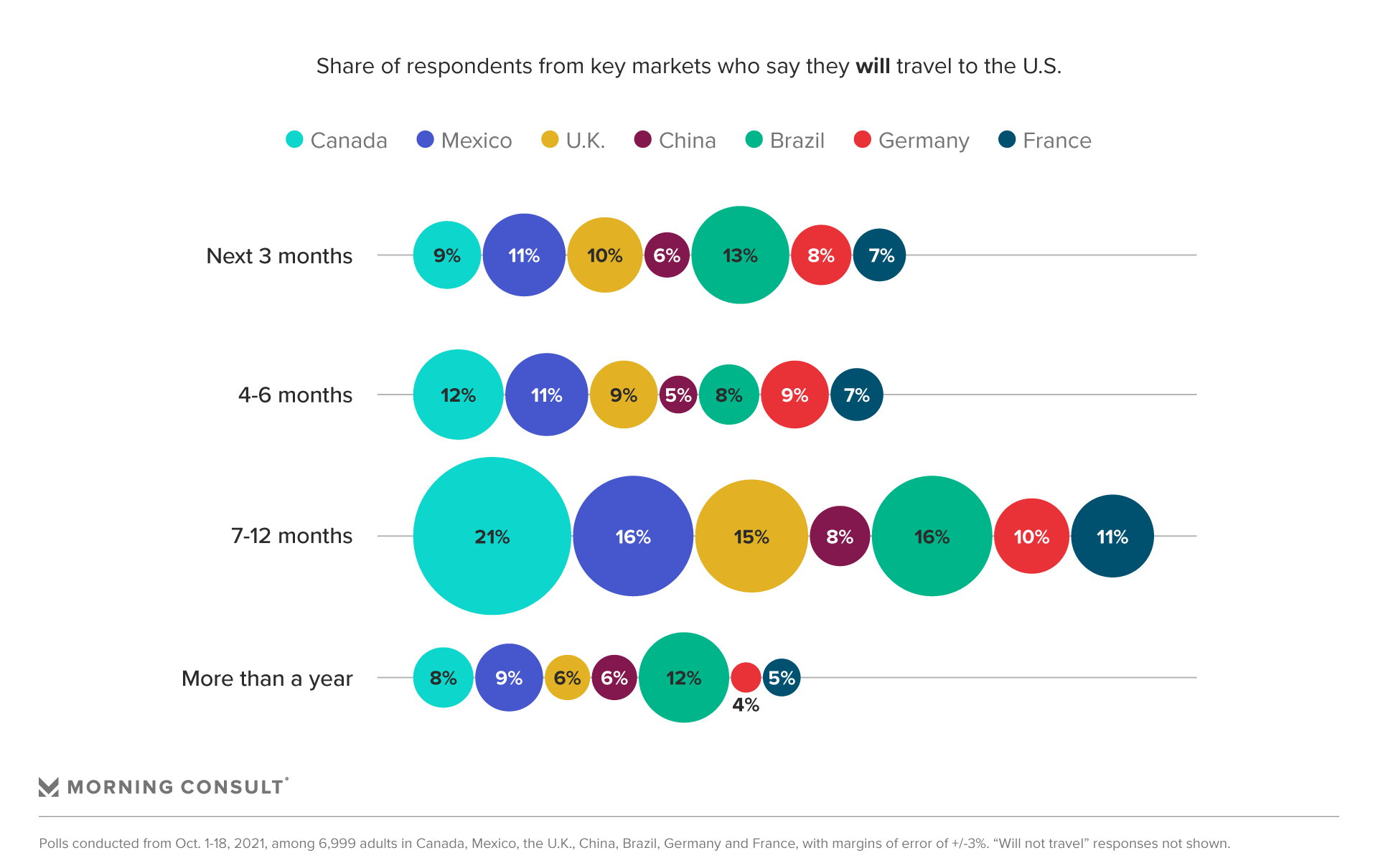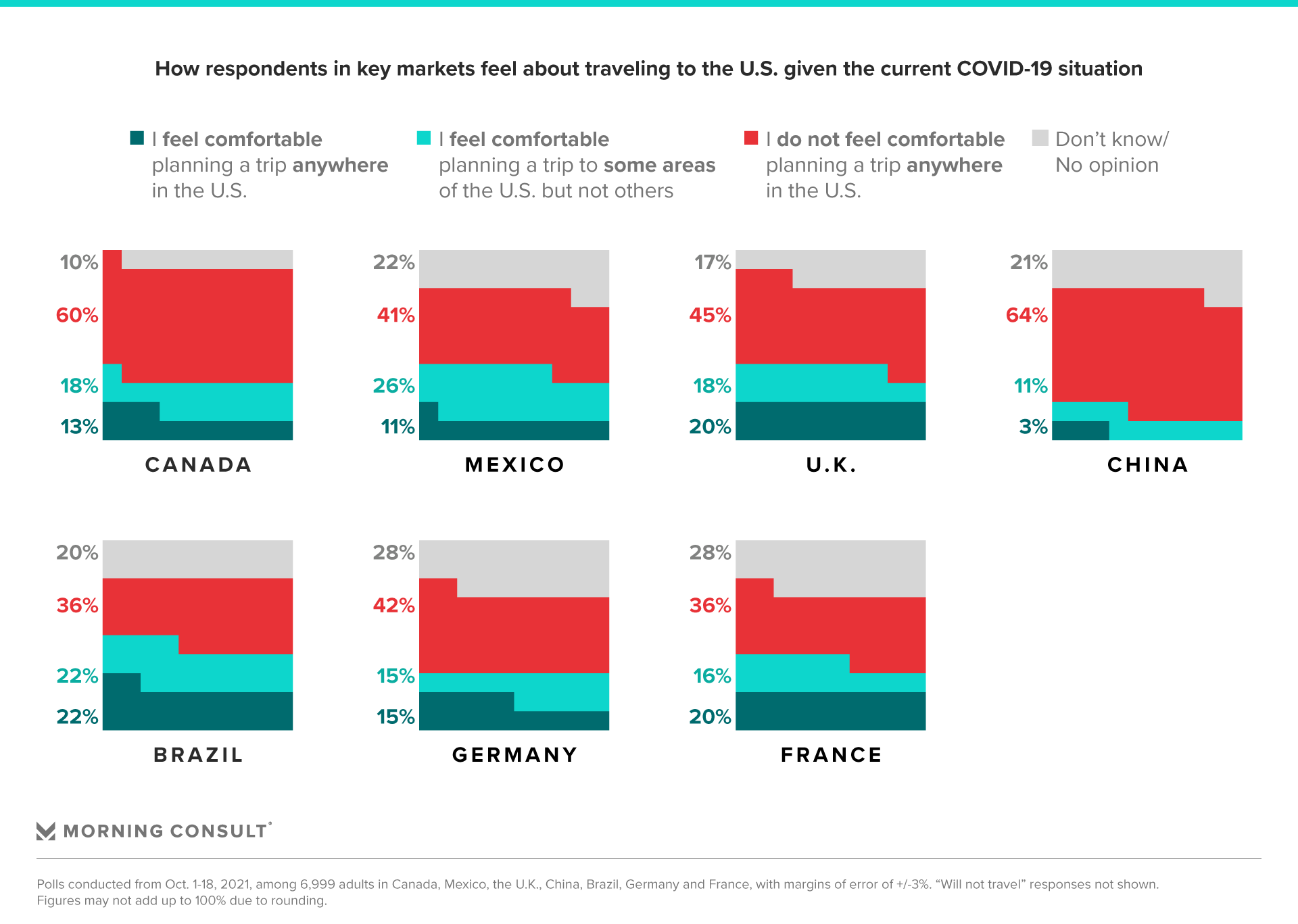
On Nov. 8, the United States will reopen its borders to international travelers for the first time in nearly 20 months.
NB: This is an article from Morning Consult
While there will be restrictions on incoming travel — with limited exceptions, visitors will have to provide proof of vaccination — the reopening represents a turning point for the travel industry. International travel spending reportedly decreased by 79 percent during the pandemic, with the United States last year seeing less than a quarter of the foreign visitors it had welcomed in 2019.
Subscribe to our weekly newsletter and stay up to date
As global travelers prepare to visit the United States, Morning Consult surveyed consumers from 11 markets to understand how they may plan travel differently than they did before the pandemic.
Many international travelers are still uncertain about their plans to visit the United States
Travel brands will see a boost in revenue from incoming travelers, but the biggest wave will come in summer 2022.
Among seven of the countries that send the most travelers to the United States in a typical year — in rank order of pre-pandemic arrival numbers: Canada, Mexico, the U.K., China, Brazil, Germany and France — relatively few people have definite plans to travel to the United States in the next three months.
Travelers from key markets in the Americas — Brazil, Canada and Mexico — are the most likely to be certain about coming to the United States in the coming year, reflecting enduring hesitancy about long-haul travel.

Inbound travel from China is the most uncertain, regardless of timeline, presenting a challenge for the industry. In pre-pandemic years, China represented the fifth-highest volume of international travelers to the United States. While Chinese respondents were fourth most likely among the seven countries to say they “will” or “might” travel to the United States in the next year, they were the least likely to say they “definitely” would.
Travel brands must be aware that while some of this is driven by restrictions in China, respondents in the country are also the most concerned about visiting U.S. destinations.
Location doesn’t matter: A plurality of international travelers don’t feel comfortable planning a trip anywhere in the United States
While many Americans remain conscious of regional ebbs and flows in domestic COVID-19 cases, inbound travelers are more likely to think of the United States as a monolith.

Across all countries surveyed, respondents were much more likely to say they don’t feel comfortable planning a trip anywhere in the United States than to say they are comfortable going to some areas but not others. Travelers from China and Canada, which together accounted for 30 percent of U.S. inbound travelers in 2019, express the most reluctance to visit the country.
As a result, international travelers are unlikely to divert their plans from regions or areas that have been hit hard by COVID-19, or that are experiencing spikes at the time of their trips, meaning destinations with a tight hold on the virus likely won’t be rewarded with a notably higher proportion of international traffic than in typical years.




